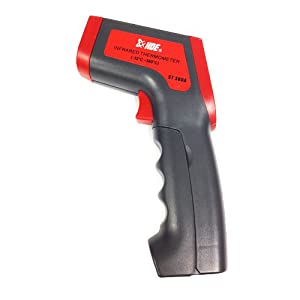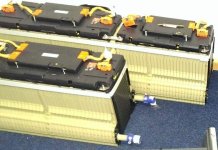Bazaki
10 kW
- Joined
- Dec 25, 2009
- Messages
- 639
In the past I have made an electric outboardmotor that was able to go a planing speeds which is my goal, planing at about 25 km/h. But the Agni 95 r at 4000 RPM is making too much noise for me. In fact I think every motor that spins over 4000 Rpm is making to much noise, even good brushless motors. Not only the motor , but gears or toothed belts will make noise too. Even the original torqeedo 4.0r motor is making a high pitching noise. Because of the standard gear ration of 1:2.33 at most common outboards you need a shaft speed of about 6000 RPM that always will make some noise I think.
So I have done something totally new and it is almost working perfect. It is a belt driving prop, with a toothed belt all the way down through the shaft to the prop.
It is really silent and powerfull, but for planing speeds I need a stronger motor, this motor was smoked after a few attempts ( Crystalyte HT3525 )
I think to get at planing speeds I need a few seconds at 7000 Watts, and at a Ebike the motor can make more rpm and will survive, at the boat the rpm is too low.
I had a 90V 80A = 7Kw setup.


And a video :
[youtube]QYR_sgHDU-4[/youtube]
Next step is to mount a motor like this:
http://image.made-in-china.com/2f0j00QMOadtVArczw/3000W-5000w-Brushless-Hub-Motor-for-Electric-Scooter.jpg
Or maybe a Cro motor, I don't know if a Cro motor is strong enough.
So I have done something totally new and it is almost working perfect. It is a belt driving prop, with a toothed belt all the way down through the shaft to the prop.
It is really silent and powerfull, but for planing speeds I need a stronger motor, this motor was smoked after a few attempts ( Crystalyte HT3525 )
I think to get at planing speeds I need a few seconds at 7000 Watts, and at a Ebike the motor can make more rpm and will survive, at the boat the rpm is too low.
I had a 90V 80A = 7Kw setup.


And a video :
[youtube]QYR_sgHDU-4[/youtube]
Next step is to mount a motor like this:
http://image.made-in-china.com/2f0j00QMOadtVArczw/3000W-5000w-Brushless-Hub-Motor-for-Electric-Scooter.jpg
Or maybe a Cro motor, I don't know if a Cro motor is strong enough.





